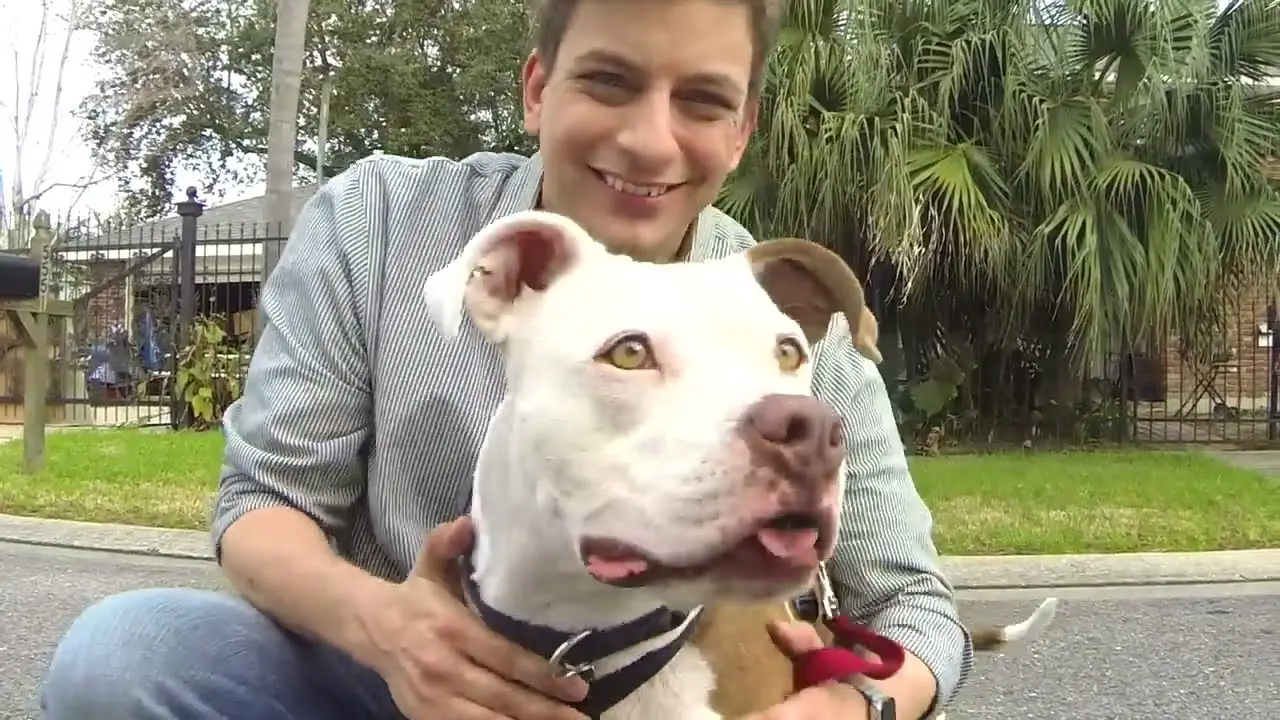The joyous patter of tiny paws, the wagging tail, the enthusiastic greeting – these are just a few of the joys of welcoming a dog into your life. However, alongside those delightful moments, there’s a potential downside that can sometimes test your patience: excessive barking. Whether it’s the incessant yapping directed at the mail carrier, the persistent barking triggered by a passing squirrel, or the seemingly endless chorus of sounds emanating from your furry companion, dealing with excessive barking can be a significant challenge for dog owners.
How do i get a dog to stop barking
This comprehensive guide will delve into the reasons why dogs bark, the various strategies you can employ to manage this behavior, and how to build a stronger, more harmonious relationship with your canine companion. We’ll explore a range of techniques, from understanding the language of barking to implementing positive reinforcement and addressing underlying emotional needs.
With a little patience, consistency, and a genuine desire to understand your dog’s perspective, you can navigate this common challenge and create a more peaceful and fulfilling environment for both you and your furry friend.

Understanding the Bark
Barking is a fundamental aspect of a dog’s communication arsenal, much like human language. Just as we use words to convey our emotions, share information, or seek attention, dogs use barks to express a wide array of feelings and intentions. Before embarking on any barking-reduction strategies, it’s crucial to understand the nuances of canine communication and the reasons behind your dog’s vocalizations. By comprehending the language of barks, you can develop a more nuanced approach to addressing the issue, fostering a deep understanding of your dog’s world, rather than simply silencing the sound.
The Role of Barking in Dog Communication
Dogs have evolved to use vocalizations as a primary means of expressing themselves, and barking is a versatile tool in their communication repertoire. It’s a powerful way for them to convey a wide range of emotions and intentions, ranging from friendly greetings to urgent warnings.
Imagine yourself in a world where words haven’t yet developed. You might resort to various sounds and gestures to get your message across. Dogs are in a similar position, relying on barks, growls, whines, and body language to communicate their needs and experiences. Their vocalizations can indicate happiness, fear, excitement, frustration, or even a need for attention. Barking is not simply a nuisance; it’s a vital part of a dog’s emotional expression and social interaction.

Understanding that barking is inherently natural and often purposeful is the first step towards a successful approach to curbing excessive or unwanted barking. When we view barking from the lens of canine communication, the challenge shifts from simply wanting to silence the dog to the more nuanced goal of acknowledging and addressing the underlying emotional needs driving the vocalizations. This approach encourages building a harmonious relationship built upon mutual understanding and respect for the dog’s communicative skills.
Different Types of Barks and What They Mean
Each bark carries a specific tone, pitch, and rhythm that, in dog language, conveys a particular message.
For example, a high-pitched, rapid-fire bark might signal excitement or playfulness. Think of the playful sounds your dog uses when chasing a ball or when greeting a beloved friend. The urgency and quick succession of barks indicate a high level of energy and enthusiasm. On the other hand, a low-pitched, guttural bark may indicate aggression or territorial defensiveness. This type of bark often indicates that the dog feels threatened or protective of its resources, whether it’s its territory, toys, or even its family members.
A prolonged, drawn-out bark is often indicative of a desire for attention or a potential alert to something unusual or new. This type of bark might signal a need for reassurance or might be an attempt to get your attention. The dog could be attempting to alert you to something in their environment – a loud noise, an unfamiliar person, or a potential threat.
Paying close attention to the context surrounding the bark can help you decipher the message. If your dog barks while staring at a mail carrier, it’s likely a territorial bark. However, if your dog barks enthusiastically while looking at you and wagging its tail wildly, it’s probably a happy greeting. Being mindful of these subtle nuances can significantly improve your understanding of your dog’s behavior and increase the likelihood of a successful response.

The Motivation Behind Barking
While barking is a natural and important part of a dog’s communication, excessive barking can be disruptive and may indicate underlying issues. Understanding why your dog is barking excessively is the key to developing an effective strategy to manage the behavior. Often, it stems from a desire for attention, fear, boredom, or even a lack of training and boundaries.
Understanding the root cause of the barking will influence the specific methods you choose to address the issue effectively. Let’s dive deeper into some of the common reasons behind excessive barking and explore the strategies we can employ to deal with each of them.
Common Causes of Excessive Barking
Excessive barking can stem from various underlying motivations. Some dogs might bark incessantly out of boredom, while others might be driven by anxiety or a desire for attention. It’s important to understand the reasons behind your dog’s vocalizations before resorting to corrective measures.
Boredom and Lack of Stimulation:
Just like humans, dogs can get bored and frustrated when not provided with sufficient mental and physical stimulation.
Without adequate engagement, a dog might resort to barking to alleviate stress, fill the void, or simply pass the time. If your dog spends hours alone in a yard or a cramped indoor space without engagement, it’s likely to bark to entertain itself. Ensuring your dog has enough playtime, opportunities for interaction, and mental stimulation – such as puzzle toys or interactive games – can mitigate this behavior. Creating a more stimulating environment for your dog – whether adding new toys, interactive feeders, or incorporating agility challenges – can help combat boredom.

Separation Anxiety:
Some dogs experience debilitating anxiety when separated from their beloved humans.
Separation anxiety can manifest in a multitude of ways – a dog’s reaction can range from barking incessantly to destructive behavior like chewing on furniture or house-soiling. If your dog is left alone for extended periods, it’s likely to feel distressed and bark as a way to cope with its frustration and longing for your company. Developing a gradual desensitization process, where the dog gets used to you leaving and returning without triggering a panic response, can be useful. Providing the dog with comfort objects, creating calming routines, and potentially consulting a veterinary behaviorist can help manage this challenging issue.
Fear and Anxiety:
Dogs, like humans, experience fear and anxiety in various situations.
These emotions can stem from various sources – loud noises, unfamiliar people, other animals, or even specific locations. Fear-motivated barking is often accompanied by other signs of stress like panting, trembling, or hiding. The fearful barking can be triggered by anything the dog finds mildly threatening and seeks to warn off.
Attention Seeking Behavior:
Barking can be a very effective way for a dog to gain attention, positive or negative.
If a dog gets a reaction from you every time it barks, it can learn that barking is a successful way to have their needs met. It could be a way to get a treat, a walk, or even just a mere scolding. While it seems counterintuitive that negative attention can reinforce barking, it’s very effective in the canine world. Teaching a dog that a more appropriate behavior achieves the desired outcome, rather than the barking, is a powerful way to address this behavior in its root.
Identifying Your Dog’s Triggers
Pinpointing what sets off your dog’s barking is crucial for developing an effective management strategy. This might involve observing your dog’s behavior over time and identifying specific patterns in their barking.

Observe the Context:
Ask yourself a few key questions: Does your dog bark more when it’s alone? Does it bark at specific people or animals? Does it bark when it hears certain sounds?
Consider the surrounding environment when the barking starts. Are there unfamiliar people, animals, or sounds around? Identifying the context can help you narrow down the triggers.
Keep a Log:
It can be helpful to record the timing, duration, and the circumstances surrounding the barking episodes.
Note down when the barking starts, how long it lasts, who or what triggers the barking, and whether your dog exhibits other signs of stress, like panting or trembling. This information can provide you with a valuable perspective on your dog’s behavior, and you can develop a more precise understanding of when these triggers are most prevalent.
Experiment with Different Strategies:
You can start to understand your dog’s triggers by performing a few experiments.
If you think your dog is barking out of boredom, try leaving it with new toys or engaging it with puzzles. A reduction in barking would point towards that being a trigger. If you suspect barking might be triggered by anxiety due to being alone, experiment with controlled departures and returns and gauge your dog’s response.
Consult a Professional:
If you’re having trouble identifying the underlying causes of your dog’s excessive barking, it can be helpful to seek the assistance of a certified professional dog trainer or a veterinary behaviorist.
They have the expertise to carefully observe your dog and provide you with tailored guidance on how to understand your furry friend’s motivations and potential causes of its behavior.
Strategies to Curb Excessive Barking
Once you’ve gained a better grasp of your dog’s barking patterns and the reasons behind them, you can start developing a plan to address the issue. The following strategies are designed to help you minimize unwanted barking while fostering a stronger bond with your canine companion. The overarching goal of these strategies is not to silence your dog but to help it communicate constructively and to establish a more harmonious living environment.

Establishing a Routine
Creating a stable and predictable daily schedule can significantly impact your dog’s emotional well-being and help mitigate stress-related barking. A consistent routine offers comfort and security, reducing the chances of anxiety-driven barking.
Set a Regular Feeding and Exercise Schedule:
Just as humans thrive on routine, dogs find solace in predictability.
Establish a consistent feeding schedule. For example, your dog might be used to receiving its breakfast around 7 a.m. and dinner around 6 p.m. Creating this consistency also helps the dog settle into a more predictable lifestyle and understand when it can anticipate receiving those basic needs.
Implement a Consistent Exercise Routine:
Ensure your dog gets regular exercise and mental stimulation.
This routine can involve daily walks, playtime in the park, or interactive games like fetch or hide-and-seek. Regular exercise helps burn off excess energy, improving your dog’s overall mood and reducing the likelihood of barking out of frustration or boredom.
Designate Quiet Time:
Establish periods of quiet time within the day.
This can be designated as a specific time when the dog is expected to relax and rest. Providing a designated space such as a dog bed or a quiet corner, where it finds peace and quiet, can help the dog associate that time with calm and peace.
Stick to the Schedule:
Maintaining consistency in your routines is crucial for establishing a sense of stability in your dog’s life.
Be diligent about adhering to your established routines, even on weekends or during holidays. Dogs tend to thrive on regularity and predictability. The consistency can greatly help reduce uncertainty and alleviate anxiety that might induce barking.
Positive Reinforcement Techniques
The use of positive reinforcement methods forms a cornerstone for effective dog training. This approach, which leverages rewards and praise to encourage positive behaviors, is the primary means of shaping a dog’s behavior and curtailing unwanted habits like excessive barking.

Rewards:
Rewards can be highly effective for shaping behavior.
Use treats, toys, praise, or even petting to reward your dog when it exhibits desired behaviors, such as remaining quiet or responding to commands like “quiet” or “enough.” Tailor the rewards to your dog’s preferences – some dogs love food, others adore toys, whereas some prefer verbal encouragement and petting.
Praise:
Verbal praise can go a long way.
Use a happy and enthusiastic tone to let your dog know when it’s behaving well. Saying “good dog!” or “yes!” with enthusiasm can be hugely effective in solidifying the positive association in your dog’s mind.
Consistency:
Be consistent, and focus on the moment when the dog refrains from barking to reinforce the desired behavior.
It’s also important to recognize that consistency is key. If you reward a behavior one day and ignore it the next, you might send mixed signals, and the dog might not be able to properly grasp the desired outcomes. The more consistent you are, the more likely your dog will understand the desired behaviors.
Timing:
Rewarding instantly is important.
Praise and reward your dog as they are exhibiting the desired behavior. For instance, as soon as your dog stops barking, express your happiness and offer a positive reward. This immediacy helps create a strong association between the desired behavior and a positive consequence.
Prevention Is Key
Proactive measures are often the most effective way to help dogs manage their barking habits. By anticipating potential triggers and creating an environment that encourages calmness, you can minimize the chances of unwanted barking.
Creating a Calm Environment
A dog’s surroundings can play a significant role in affecting their emotional state. By creating a calm environment – minimize stress and promote relaxation – you can significantly reduce barking stemming from anxiety or fear.
Minimize Noise and Distractions:
Excessive noise and distractions can trigger anxiety and increase the likelihood of barking.
If possible, create a quiet area within your house for your dog to escape when it feels overwhelmed. Using calming music or white noise might also help create a soothing atmosphere for your dog. These sounds can block out external distractions and help manage your dog’s anxiety.

Create Safe Spaces:
Establish secure spaces in your home where your dog can retreat feeling safe and secure.
A dog crate, a comfortable dog bed, or even a quiet corner in a room can provide your dog with a retreat from the outside world. These spaces should feel calm and comforting, free from interruptions and noise, allowing your dog to relax and de-stress.
Routine and Predictability:
Maintain a consistent daily routine.
This includes regular feeding times, walks, playtime, and even quiet periods. Predictability can help reduce anxiety and stress, making your dog feel more relaxed and confident. This also instills a predictable pattern for the dog, giving them a sense of stability and reducing uncertainty about what they can anticipate in their environment.
Limiting Exposure to Stimuli
If your dog’s barking is triggered by specific external stimuli like people or other animals, try to minimize their exposure.
Visual Barriers:
If your dog barks at people walking by your house, consider using curtains or blinds to block their view of the street, thus reducing the visual triggers that set off their barking.
Sound Barriers:
If your dog is sensitive to loud noises or certain sounds consider soundproofing a room, or offering white noise to diffuse some of those noises that might stress the dog out.
Training Techniques: The Power of Commands
Utilizing commands adds a layer of structure and clarity in your communication with your dog. By teaching basic commands like “quiet” or “enough,” you provide your dog with tools for self-regulation and offer clear guidance on what behavior you anticipate.
Teaching Basic Commands to Your Dog
Consistent training is crucial when teaching your dog new commands. Use positive reinforcement methods to support your training and reinforce the idea that responding to the commands will lead to a positive reward.
“Quiet” Command:
When your dog starts barking, immediately say “quiet” in a firm, yet gentle, tone.
As soon as the dog stops barking, immediately reward them with a treat and praise. The reward should immediately follow the dog’s response to the command, reinforcing the connection in the dog’s brain. It’s helpful to use a consistent hand signal along with the verbal command.
“Enough” Command:
Similar to the “quiet” command, you could use “enough” when you want your dog to curtail a specific action that precedes barking.
You might use the command if your dog is barking at another dog when on a leash or if your dog acts aggressively when protecting a toy. The “Enough” command has a more wide-reaching usage, applicable to various behaviors that might precede or lead to barking.
Practice Regularly:
Regular practice is key.
Short training sessions, spread out over multiple days with consistent encouragement and reward, will allow your dog to consolidate the learning. Consistency is crucial for helping the dog grasp the desired outcomes and link those outcomes to positive reinforcement.
Consistency in Training Sessions
Consistency is vital when teaching your dog commands.
Establish a Routine:
Designate a specific time each day for training, creating a routine that provides your dog with a predictable time to anticipate the training sessions and respond to the commands.
Use Clear and Concise Commands:
Keep your commands simple and consistent.
Avoid using a variety of commands for the same task, such as switching between “quiet” and “hush.” Utilizing a consistent word for each task helps the dog learn more quickly and creates a clear, predictable association connecting the command with the intended outcome.
Short Duration Training:
Keep training sessions short and sweet.
10-15 minutes each day are more likely to lead to a successful result than an hour-long session once a week. Short focused bursts of attention from you can have substantial impacts on your dog’s receptivity to the training.
Positive Reinforcement:
Ensure to use positive reinforcement methods to reward even small successes during training sessions.
The positive reward will help your dog feel encouraged and reinforce that the commands are associated with positive outcomes.

Socialization and Exercise: The Dynamic Duo
Providing your dog with opportunities for socialization and regular exercise is a potent combination for mitigating barking tendencies. Physical activity helps expend energy, and interaction with other dogs helps satisfy a dog’s social needs.
Importance of Regular Physical Activity
Daily exercise plays a significant role in curbing unwanted barking. It helps manage excess energy, alleviate pent-up stress, and generally improve a dog’s overall mental and emotional state.
Energy Expenditure:
A well-exercised dog is less likely to resort to barking out of boredom or frustration.
If your dog is a high-energy breed, or simply has a proclivity for being energetic, ensure they access a regular, consistent amount of physical activity to fulfill their need for energy expenditure.
Stress Reduction:
Regular physical activity helps alleviate stress.
Exercise releases endorphins, which have mood-boosting effects. When your dog is free of excessive stress or anxious feelings, the inclination to bark might reduce substantially.
Mental Stimulation:
Combining exercise with mental enrichment – like agility training, hide-and-seek, or scent games – can make exercise even more effective.
These types of activities encourage mental engagement and problem-solving, adding a layer of fulfillment and excitement to your canine companion’s routine and further reducing the propensity for barking.
Benefits of Socializing with Other Dogs
Interactions with other dogs can satisfy your dog’s natural social needs and significantly reduce anxiety-related barking.
Building Social Confidence:
Socialization helps to build social skills and confidence.
Your dog can learn to appropriately interact with other dogs, reducing anxiety and potential for aggression that might lead to barking. The more comfortable the dog is, the greater chance it might not resort to barking out of defensiveness, nervousness, or social awkwardness.

Reducing Boredom:
Social interaction helps mitigate boredom and promotes calmness.
Many dogs feel socially isolated and experience anxiety related to a lack of socializing with other dogs, potentially giving way to barking. Finding opportunities for your dog to interact with other dogs in a safe and controlled environment can significantly alleviate this boredom and potential trigger that leads to barking.
Improved Overall Health:
Socialization is not just good for a dog’s mental well-being but also has physical benefits.
It offers increased opportunities for physical activity, and the joy of socializing releases endorphins, contributing to a dog’s overall health and well-being. As your dog’s physical and emotional state improves, their risk for barking might also reduce.
Addressing Environmental Triggers
If barking is triggered by specific environmental factors, such as noise or people walking by your house, it’s essential to address those triggers directly.
Managing Visual Stimuli
If your dog barks at passersby, or becomes overly excited by visual triggers, you can address those triggers by attempting to reduce their visual stimulation.
Curtains and Blinds:
Consider installing curtains, blinds, or using window films to block your dog’s view of the outside world.
This can help reduce the frequency and intensity of barking triggered by external events.
Fences:
Install fences if your yard doesn’t already have them.
This can reduce your dog’s ability to make prolonged eye contact with other dogs and people.

Safe Spaces:
Create safe spaces within your home for your dog to retreat from the potential visual triggers.
Give your dog a dedicated area to escape to where it can avoid the triggers and relax. This space might be a crate, a dog bed in a quiet part of the house, or even behind a piece of furniture that blocks their view of the outside.
Providing Mental Enrichment
Keeping your dog’s mind engaged is a key aspect of managing excessive barking triggered by boredom or a lack of stimulation.
Interactive Toys:
Provide your dog with interactive toys like puzzle toys, treat dispensing toys, or toys that require them to perform a physical action.
These toys engage a dog on a more complex level, forcing them to solve puzzles or anticipate rewards. This satisfies their natural instincts and provides a substitute for a more unwanted behavior, such as barking.
Training and Learning:
Engage your dog in training sessions regularly, or teach them new tricks.
This type of activity stimulates your dog’s cognitive abilities and tires them out mentally. This can significantly reduce unwanted behaviors as a direct consequence of the mental enrichment.
Chew Toys:
Offer chew toys to keep your dog entertained and engaged.
These toys satisfy a dog’s natural desire to chew and keep their minds occupied. This is especially important if your dog is prone to barking out of boredom.

Desensitization Techniques
Gradually exposing your dog to their triggers in a controlled and safe environment can be very helpful to curb barking stemming from fear or anxiety.
Gradual Exposure to Triggers
Desensitization involves slowly and systematically exposing your dog to the triggers that make them bark.
Start Slowly:
Begin by exposing your dog to the trigger at a distance where they show minimal signs of fear or stress.
This might involve having a person walk by your house from a far distance, staying far away from another dog with your own dog, or playing a recording of a sound from a far distance.
Increase Exposure Gradually:
Slowly and gradually increase the intensity and proximity of your dog to the trigger.
As your dog exhibits signs of comfort and adapts to their trigger at a particular degree of intensity, gradually increase the intensity. This will help them to gradually develop tolerance for the trigger that once provoked an immediate stress response.
Reward Calm Behavior:
Reward your dog with treats, praise, or toys whenever they remain calm in the presence of the trigger.
This will help them associate the stimulus with positive experiences and reduce their anxiety.
Rewarding Calm Behavior During Exposure
The use of positive reinforcement during desensitization is very important.
Reward Calmness:
The moment your dog shows signs of remaining calm, offer a reward.
Consistent Rewards:
Be consistent with your rewards to reinforce a strong association between calm behavior and positive stimulation.
Rewards Need to be Tailored to The Dog:
When training, ensure your dog understands how to execute the behavior you desire.
Some dogs might be food-motivated, and for them, a treat is a huge reward. Some dogs might be toy-motivated, and giving them a favorite toy will motivate them to continue the training. Understanding your dog’s preferences will make training a lot more successful.
Communication Beyond Barking
Teaching your dog alternative forms of communication can reduce their reliance on barking to get their needs met. This broader approach to communication adds another layer of understanding between you and your dog.
Alternative Communication Methods
Exploring new methods for your dog to communicate their wants and needs can help them find more constructive ways to express themselves.
Sign Language:
Dogs can be taught hand signals, or gestures, as a method of communication.
For instance, you might show your dog a gesture to indicate “walk” or “food,” which reduces the need for them to bark to get these things.
“Touch” or “Target” Training:
Training your dog with a “touch” command can teach them to use their nose to touch a specific object, such as your hand or a specific toy.
This can be a way for them to obtain a reward, or to express a desire to do something.
Running to a Mat:
Some experts suggest that you train your dog to go to a designated spot, such as a mat, upon a certain threshold of barking.
Instead of barking nonstop, the dog is trained to go to the mat for a reward, after a particular number of barks. This method redirects their focus and reduces the impulse to continuously bark.
Redirecting Focus to Constructive Behaviors
Offering alternative and enriching activities for your dog to channel their energy can be incredibly effective.
Interactive Games:
Engage your dog in structured play sessions like fetch, tug-of-war, or agility training.
These activities not only satisfy your dog’s need for mental and physical stimulation, but they also redirect their focus away from potential triggers that might lead to barking.
Puzzle Toys:
Puzzle toys can provide stimulating activities for dogs that reduce their tendency to bark.
These toys engage a dog’s natural curiosity and hunting instinct, fulfilling their needs in a more constructive way than barking.
Training and Learning:
Training exercises can be a great method of engaging your dog and stimulating their mind.
Training sessions can be interactive, and it’s a great way to have your dog channel their mental energy. Teaching your dog a new trick, or continuing with the training sessions consistently on the topics they already know, can be a huge benefit both for your dog and your relationship with them.
The Importance of Ignoring Attention-Seeking Barking
It’s essential to understand and address situations where barking is driven by a dog’s desire for attention. Ignoring this behavior effectively teaches them that barking is not an effective way to get their needs met.
Understanding Attention-Seeking Behavior
Dogs readily learn that barking can be an effective way to command attention, even if that attention is a negative response, such as a scolding.
Rewarding Barking:
If you consistently respond to your dog’s barks, whether with attention, scolding, or treats, you might inadvertently reinforce that barking is the method by which they can get a response.
Consequences of Rewarding Barking:
If behaviors like barking are consistently rewarded, they are continually reinforced.
This means that the behavior is likely to continue. If you’re not careful, this can lead to excessive barking when the dog feels that they might get a response out of you by barking.
Teaching Your Dog Alternative Ways to Seek Attention
Teach your dog alternative ways to receive attention that don’t involve barking.
Responding to Positive Behaviors:
When your dog behaves in a way that is desirable, reward with praise, treats, or a favored toy.
This will reinforce the idea that the dog will be favorably rewarded if it engages in a more desirable behavior.
Ignoring Barking:
If your dog barks for attention, don’t give in.
Ignore the barking and wait until your dog is quiet. Only then can you interact with them positively. This helps teach the dog that quiet behavior leads to their needs being met, while barking won’t.
Training and Consistent Routine:
Training can help your dog achieve their desired needs in a more acceptable way, by relying on your preferred behaviors.
Training your dog using positive reinforcement approaches will reinforce the idea that consistent engagement in those desired behaviors gets them what they want, without having to resort to barking.
When to Seek Professional Help
While many dog owners can effectively manage barking issues using the strategies we’ve discussed, some cases warrant the intervention of a professional. If you’ve tried various techniques but haven’t seen significant improvements, it’s time to seek expert assistance.
Signs Your Dog Needs Expert Guidance
There are a few signs that your dog might be needing professional help in addressing their barking behavior.
Barking Is Severe and Excessive:
If your dog’s barking is excessive and significantly disruptive to your life and your neighbors, it is very likely that you should consult a professional.
Underlying Medical Issues:
Sometimes, excessive barking is a sign of a medical condition.
If you’re unable to identify the cause of the barking, or it feels excessive relative to your dog’s personality and context, it’s probably worth having your veterinarian evaluate your dog for potential underlying issues.

Dog Is Showing Signs of Distress:
Barking might accompany or precede behavior that indicates your dog is struggling with anxiety or fear.
These signs might include excessive panting, destructive behavior, changes in eating habits, or trembling. If you don’t know how to address these concerns, it’s very likely you might benefit from seeking professional guidance.
Types of Professionals Who Can Assist
Several professionals can help you address your dog’s barking issues.
Certified Professional Dog Trainers (CPDT-KA):
These professionals have undergone specialized training and certification to help train dogs with behavioral problems.
Veterinary Behaviorists (DACVB):
These professionals are veterinarians with specific training in animal behavior. They can help determine if medical conditions are contributing to your dog’s barking and offer personalized behavioral management plans.
Animal Behavior Consultants:
These professionals have undergone specialized training and can help with a variety of behavioral problems, including barking.
The Role of Breed and Personality
It’s important to consider your dog’s breed and individual personality when approaching barking issues. Some breeds are naturally more prone to barking than others and require tailored training methods for effective management.
Understanding Breed-Specific Barking Traits
Some dog breeds have been selectively bred for certain roles that predispose them to barking more frequently.
Herding Dogs:
Herding dogs, such as Border Collies, Australian Shepherds, and Shetland Sheepdogs, are bred to use their voices to control and manage livestock.
Guard Dogs:
Guard dogs, such as German Shepherds, Rottweilers, and Doberman Pinschers, have a natural tendency to bark to alert their owners to potential threats.
Terriers:
Terrier breeds like Yorkshire Terriers and Jack Russell Terriers have a reputation for being alert and vocal, often barking at anything that piques their interest. Understanding these inherent breed traits can help you set reasonable expectations for your dog and tailor your training accordingly.
Tailoring Approaches to Individual Personalities
Each dog is unique and has personality quirks that influence their overall behavior and the intensity of barking tendencies.
Sensitive Dogs:
Some dogs are naturally more sensitive or anxious, and their barking might be a reflection of their heightened emotional state. Training methods need to be tailored to the specific temperament of each dog. Utilizing positive reinforcement and creating a calm and predictable environment are key for these dogs.
Bold and Outgoing Dogs:
Some dogs are overtly confident and exuberant, displaying more assertive barking. While they might express their excitement and enthusiasm with some frequency, it might not necessarily be a cause for concern.
Shy and Insecure Dogs:
Some dogs are naturally shy or afraid of certain stimuli, and their barking might reflect their attempt to communicate discomfort or anxiety.
Gentle training with a focus on reducing potential triggers and using positive reinforcement can help build confidence and reduce the likelihood of such stress-related barking behavior.
Tools and Resources for Barking Solutions
Various tools and resources can assist you in managing your dog’s barking. Some are specifically designed to curtail barking, while others provide informational support to help you through the learning process.
Collars and Devices to Manage Barking
The market offers a range of electronic devices. While these devices can be helpful in some cases, they should be used cautiously and with expert advice and supervision.
Bark Collars:
Some bark collars use a sound or vibration to discourage unwanted barking.

Remote Trainers:
These devices allow you to train your dog from a distance with a sound or vibration cue. Both are a type of mechanism that aims to deter the dog from barking excessively.
Limitations of These Devices:
It’s important to understand that these devices aren’t magical solutions. Some might not be effective for every dog and could potentially have adverse effects in a dog that is particularly sensitive.
Use with Caution:
If you’re considering using an electronic device, consult with a certified professional dog trainer. They will offer a better, more informed opinion on the validity of these devices on a case-by-case basis.
Recommended Books and Online Resources
Numerous books and online resources can equip you with more knowledge to effectively manage dog barking.
Books:
- The Art of Raising a Puppy, by the Monks of New Skete
- The Other End of the Leash, by Patricia B. McConnell
- Perfect Puppy in 7 Days, by Sophia Yin
- Zak George’s Dog Training Revolution, by Zak George
Online Resources:
- The Association of Professional Dog Trainers (APDT)
- The International Association of Animal Behavior Consultants (IAABC)
- The American Veterinary Society of Animal Behavior (AVSAB)
Troubleshooting Common Issues
Sometimes, despite your best efforts, you might encounter setbacks or challenges when training your dog to stop barking. Recognizing these common obstacles and understanding how to approach them can be incredibly valuable and help maintain momentum in your training program.
Handling Setbacks in Training
It’s crucial to maintain a positive and understanding approach when your dog seems to slip back into old barking habits.
Consistency Is Key:
Even when faced with setbacks, maintaining your routine and sticking to your training plan is incredibly important.
Persistence and Patience:
Reassure your dog and remind them of the behavior you expect with clear and positive reinforcement.
Avoid Punishment:
Avoid punishing your dog for setbacks. Punishment can create fear and anxiety that might induce more barking.
Recognizing Situations Where Barking May Return
In certain situations, your dog might slip back into unwanted barking patterns.
Stressful Events:
Significant changes in your dog’s environment, such as moving to a new home, welcoming a new pet, or undergoing a change in routines, can lead to increased anxiety and potential for barking.
Visitors:
New people entering your home might be exciting or intimidating for your dog, so expect them to bark more frequently in the initial stages of their introduction to your home.
Changes in Your Lifestyle:
If your life experiences changes, such as work hours, you might notice a change in your dog’s behavior, such as a propensity to bark more often when they previously managed their needs without barking.
Long-Term Solutions for Barking Problems
Developing a sustainable barking management plan ensures that the positive changes you’ve achieved are maintained over time. This approach fosters a harmonious coexistence between you and your dog, leading to greater peace and understanding for both of you.

Developing a Sustainable Bark Management Plan
Your plan should focus on addressing the underlying causes of your dog’s barking alongside ongoing positive reinforcement and management strategies.
Individualized Approach:
Your plan should be unique to your dog. Pay attention to your dog’s breed, personality, age, and the behavioral triggers that lead to barking.
Training Consistency:
Continuously reinforce positive behaviors and use consistent commands and routines to maintain your dog’s desired behavior, as well as reducing unwanted behaviors.
Routine Monitoring:
Continue to monitor your dog’s behavior and adjust your plan as needed.
Maintaining Consistency Over Time
Maintaining consistency in your training and management strategies will ensure that your dog’s progress continues.
Routine and Predictability:
Maintain the daily exercise and training routines you’ve established.
Positive Reinforcement:
Continue to use positive reinforcement and reward the desired behavior consistently.
Management of Triggers:
Maintain the environmental management practices you’ve put in place to address triggers for barking.
Building a Stronger Bond with Your Dog
Addressing barking effectively is not just about curbing unwanted behavior; it’s also about enriching your relationship with your dog. By fostering a stronger bond through understanding, communication, and positive interactions, you lay the foundation for a richer, more joyful relationship with your canine companion.
Enhancing Trust Through Positive Experiences
Creating a positive association with training and activities can build a stronger bond with your dog.
Rewarding Good Behavior:
Always reward even the smallest of improvements using positive reinforcement.
Fun and Interactive Experiences:
Create enjoyable and interactive experiences when training and engaging in play.
Avoiding Negative Interactions:
Avoid using punishment or harsh language when training. This helps instill a positive understanding of your training and positive outlook on engaging with you.
Engaging in Activities That Foster Connection
Make time for special activities that foster connection and strengthen your bond with your dog.
Interactive Games:
Engage in play sessions that involve your dog mentally and physically.
Training and Learning:
Continue engaging in training and teaching your dog new tricks. This will help your dog thrive while also being enjoyable for both of you.
Affection and Bonding:
Spend time with your dog, petting them, and cuddling.

Conclusion
Managing excessive barking can be a journey that calls for patience, understanding, and consistency. While it’s a common hurdle for many dog owners, it can translate into a much deeper, more fulfilling bond between you and your dog. By understanding the reasons behind your dog’s barking, implementing effective training strategies, and fostering a strong relationship built on positive communication and interaction, you can transform the barking challenge into a valuable opportunity to understand your dog better and strengthen your bond. The goal is not to silence your dog, but to help it communicate constructively, develop healthy emotional responses



